When visiting Vermont, it’s best to grasp the official state animals of Vermont and get a glimpse of them at the zoo, homes, or museums. The state has some of the most spectacular creatures as its state animals, representing its beauty. Let’s look at the different state animals of Vermont.
Official State Animals of Vermont
1. Northern Leopard Frog
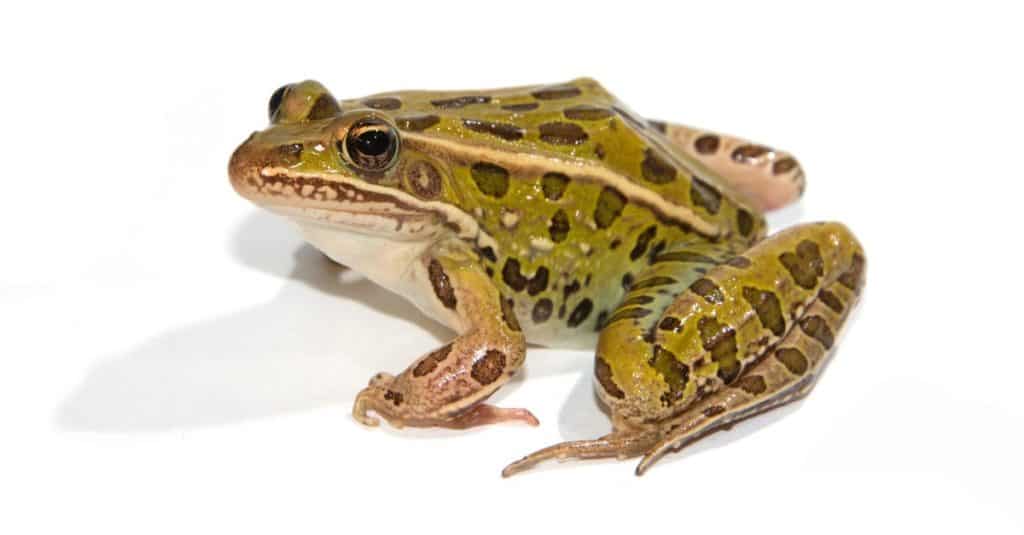
©Gerald A. DeBoer/Shutterstock.com
Northern Leopard or Rana pipiens is Vermont’s official state amphibian, also known as Meadow Frog. The amphibians were discovered in the summer of 1996 when the Department of Environmental Conservation (DEC) in Vermont received reports of abnormal frogs at four different sections within Lake Champlain Basin.
History of the Leopard Frog
This prompted the DEC to investigate the four sections, and they found that all the sites had that year’s hatch of Northern Leopard Frogs. They collected 240 frogs, of which 13% had defects like missing or stunted limbs.
These findings warranted further research, and in 1997, the Vermont DEC, in conjunction with USEPA (United State Environmental Protection Agency), USFWS (United States Fish and Wildlife Service), USGS-BRD (United States Geological Survey’s Biological Resource Department), and Middlebury College surveyed over 2,500 frogs.
Approximately 8% of the frogs displayed abnormalities such as missing or stunted legs and toes. And note that viruses, bacteria, or parasites did not cause these defects.
The findings from the survey urged the Vermont Legislature to recognize the northern leopard frog as the official state amphibian through Senate Bill No. 241, which Senator Elizabeth Ready sponsored. Therefore, in 1998, the northern leopard frog was stated as Vermont’s official amphibian of state.
The northern leopard has various colors, including green, brown, and black spots like a leopard, hence its name. It also has two lines on its back extending from each eye to the frog’s hind leg, referred to as dorsolateral. The frog’s underside is creamy white. The frog represents the state’s beauty.
It is medium-sized and grows to about 3.5 inches long. The frog is found in Vermont ponds, wetlands, lakes, rivers, and streams. The frog helps control the number of insects and pests while keeping algae-free wetlands. And in summer, you’ll find them venturing further into the fields for food.
2. Hermit Trush
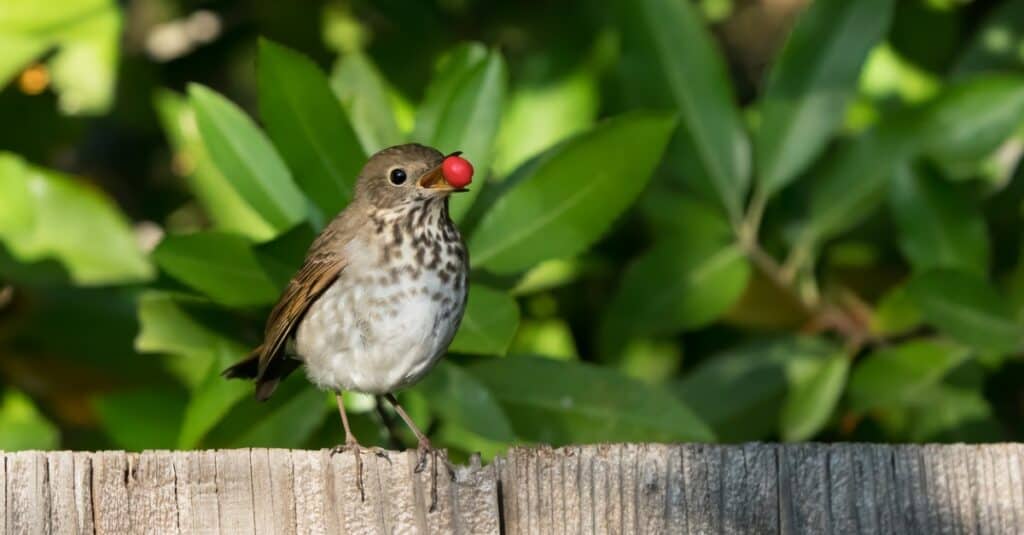
©iStock.com/Wendy/Jeff Sparks/Torquemada
Hermit thrush, or Hylocichla gutta pallasi, was appointed as Vermont’s state bird by an act of the Legislature in 1941. Hermit thrush was not the most favored as it was not considered a true Vermont bird like the blue jay or crow, which some legislators proposed. However, Vermont’s Federated Women’s Club was crucial in naming the state bird.
The hermit thrush was selected as Vermont’s state bird because it has a unique call, and it’s found in 14 counties within Vermont.
3. Honeybee
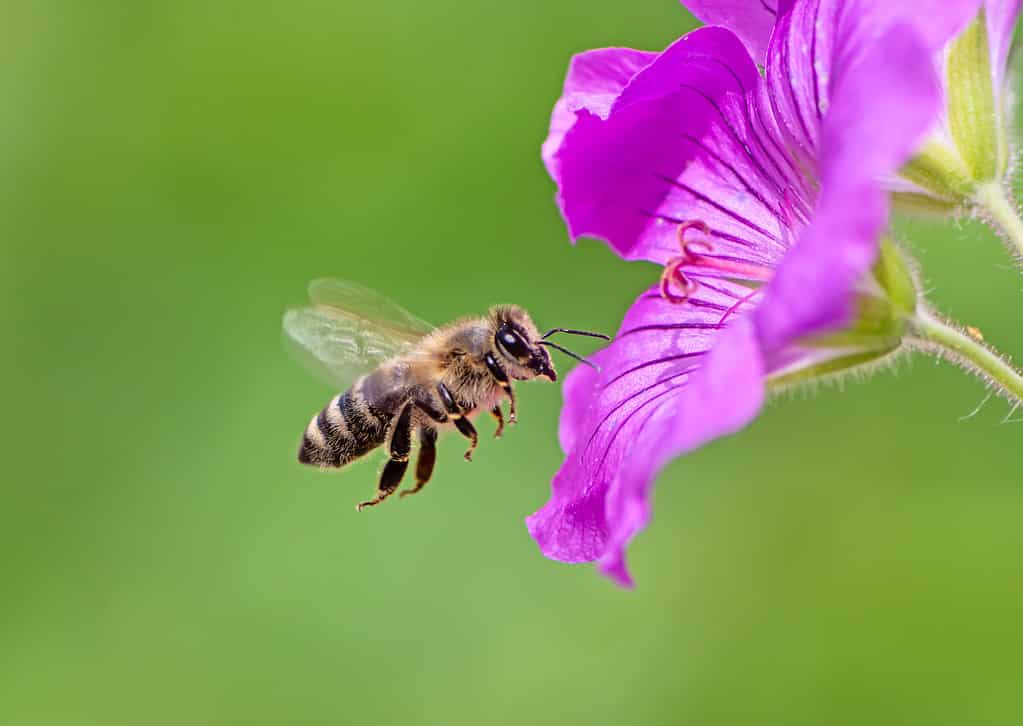
©iStock.com/manfredxy
You may wonder, are bees animals? Yes, bees are animals classified as invertebrates, making them one of the official state animals of Vermont. Honeybee, or Apis mellifera, was adopted as Vermont’s official state insect in 1978 under Act No. 124.
Honeybees are red/brown with black bands on the back and orange-yellow rings on the underside. You will also notice hairs on their thorax and abdomen and a pollen basket on their back legs.
Honeybees thrive in areas with abundant flowering plants, such as forests, gardens, and meadows. They can also survive in dry areas with sufficient water, food, and shelter. Its beauty and purpose do not go unnoticed. Therefore, twenty other states have honeybees as their state insect.
4. Monarch Butterfly
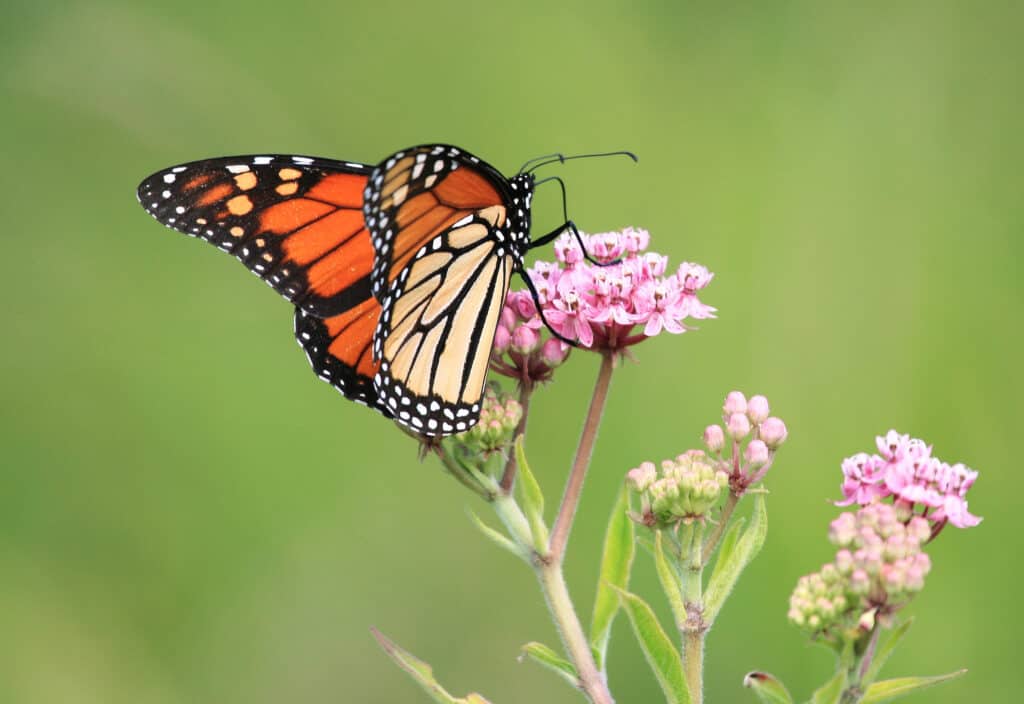
©David Byron Keener/Shutterstock.com
The students at Cornwall School also influenced the adoption of the state butterfly. The monarch butterfly, or Danaus plexiplus, was adopted as Vermont’s state butterfly in 1987. The butterfly has various colors, including orange, black, and white. These colors represent various aspects of Vermont State, black represents the state’s soil, orange represents the autumn season, and white represents snow.
The monarch butterfly is primarily common in Vermont during late summer and early autumn.
5. Brook Trout
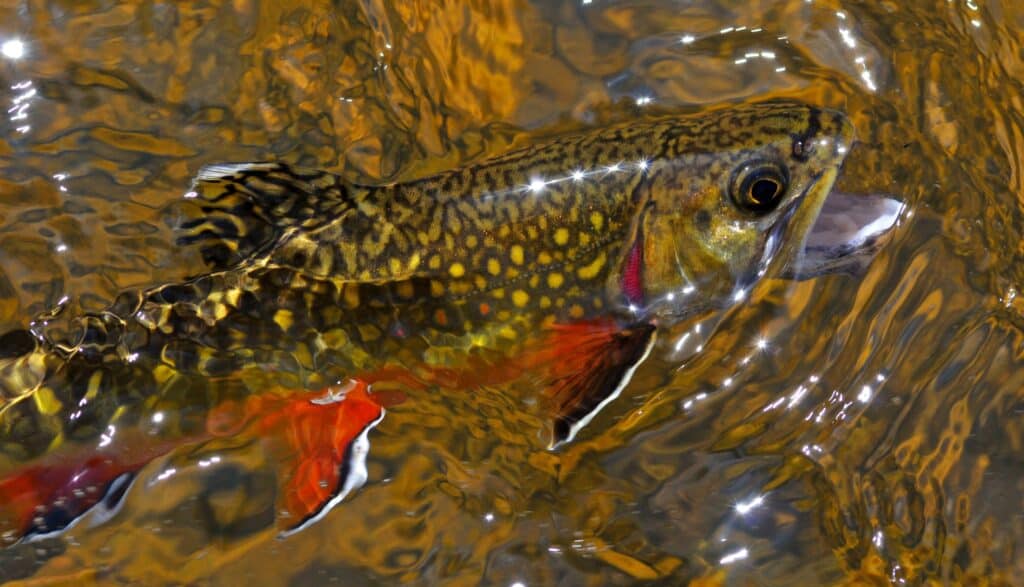
©Dec Hogan/Shutterstock.com
Brook trout, or Salvelinus Fontinalis, was adopted as Vermont’s official state fish in 1978 via a Joint Resolution R-91. The fish is native to Vermont streams and is a cold-water fish. Therefore, it is the perfect choice as the official state fish. The weight of brook trout varies depending on the habitat, however, the highest brook trout caught weighed 5lbs 12oz.
6. Walleye Pike
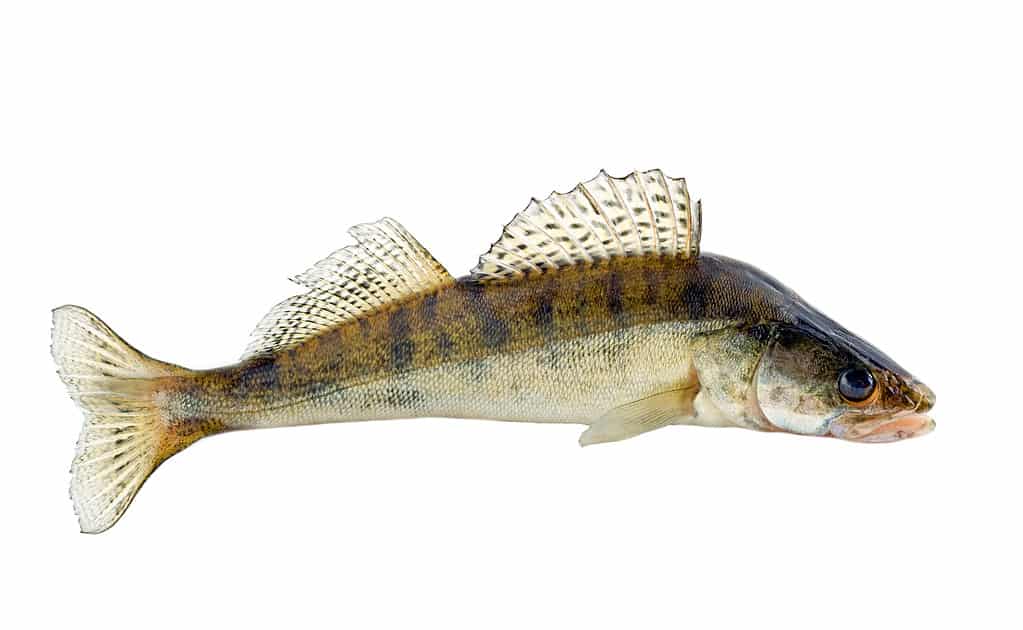
©iStock.com/Vladyslav Danilin
Walleye pike or Stizosedion vitreum is a warm-water fish primarily found in Vermont Lakes. Under a Joint Resolution, the fish was elected Vermont’s official warm-water fish in 1978. The name “walleye” is attributed to the fish’s unusual ‘marble eye,’ which looks light and transparent. Therefore, this unique fish is a perfect choice for a state animal.
The weight of a walleye pike ranges between four and eight pounds. However, the heaviest walleye pike caught weighed 12 lbs 8oz.
7. Painted Turtle
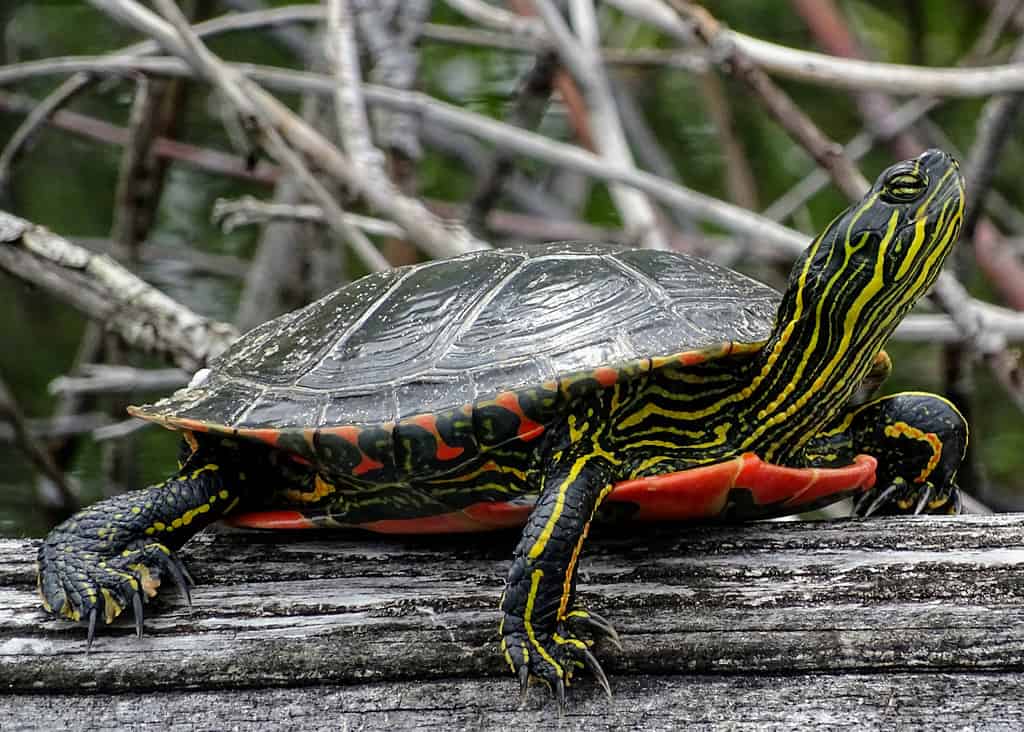
©iStock.com/Dave Acheson Photography
Vermont adopted the painted turtle, or Chrysemys picta, as its official state marine reptile on May 16, 1994. Elementary students from Cornwall School drove the adoption of the painted turtle and also the warm and cold water fish.
So, why was the Painted Turtle adopted as the state reptile?
- A turtle works hard and is also resilient to cold temperatures
- Helps in keeping pests under control
- It’s the most common turtle in the state of Vermont
- It enhances the aesthetics of the ponds
- The turtle is a representation of the state’s beauty, especially in autumn
8. Morgan Horse
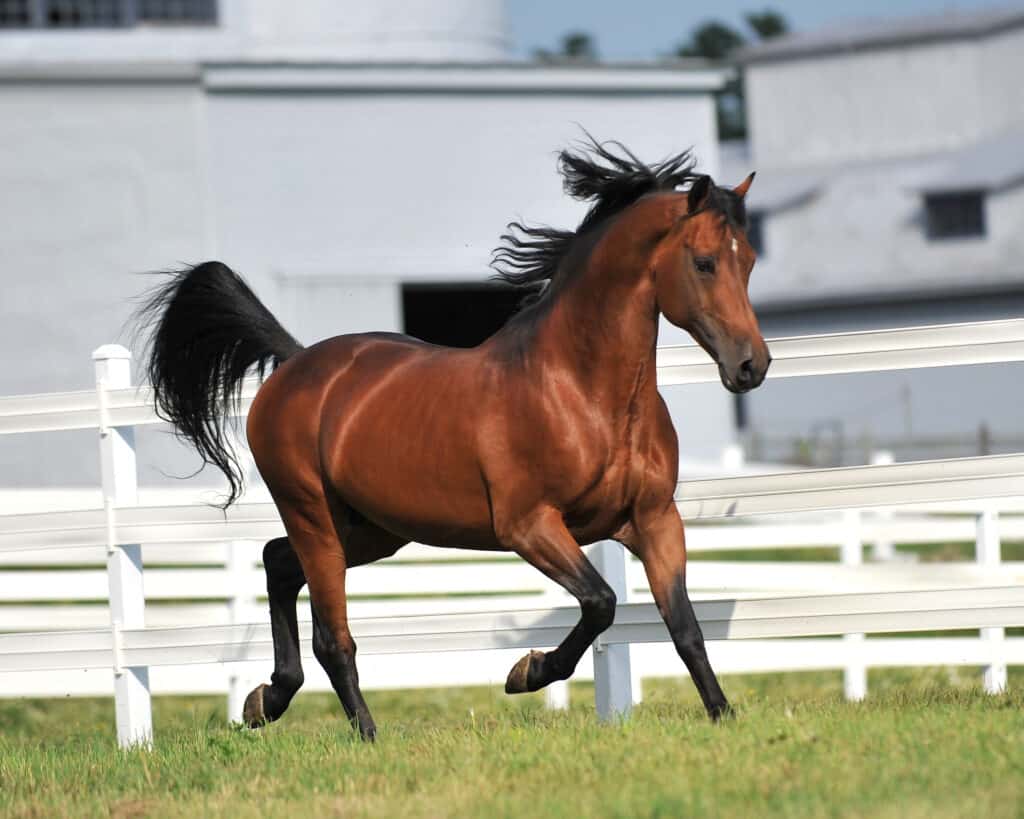
©Christopher Crosby Morris/Shutterstock.com
Morgan horse, or Equus caballus, was elected as Vermont’s official state animal in 1961. This was influenced by the Massachusett’s efforts to adopt the Morgan horse as their state horse.
The choice of the Morgan horse to be Vermont’s official state horse was led by the former Director of the American Morgan Horse Association in Middlebury, Marilyn Childs, and also Amber Broderick, former Director of the National Museum of the Morgan Horse. Deane C. Davis also conceded to adopting the state animal before the end of his term.
You’ll find a statue figure of Morgan, the horse, at the University of Vermont Morgans Horse Farm in Weybridge. This commemorates the horse that died at 32 and was buried in Tunbridge, Vermont.
Although it was small, the horse was strong and fast. The horse participated in several horse races and won. Justin Morgan owned the first Morgan horse in the late 1700s. Therefore, many more horses were bred as strong and fast as this horse. Now the horse is used for pulling and riding.
9. Randal Lineback Cattle
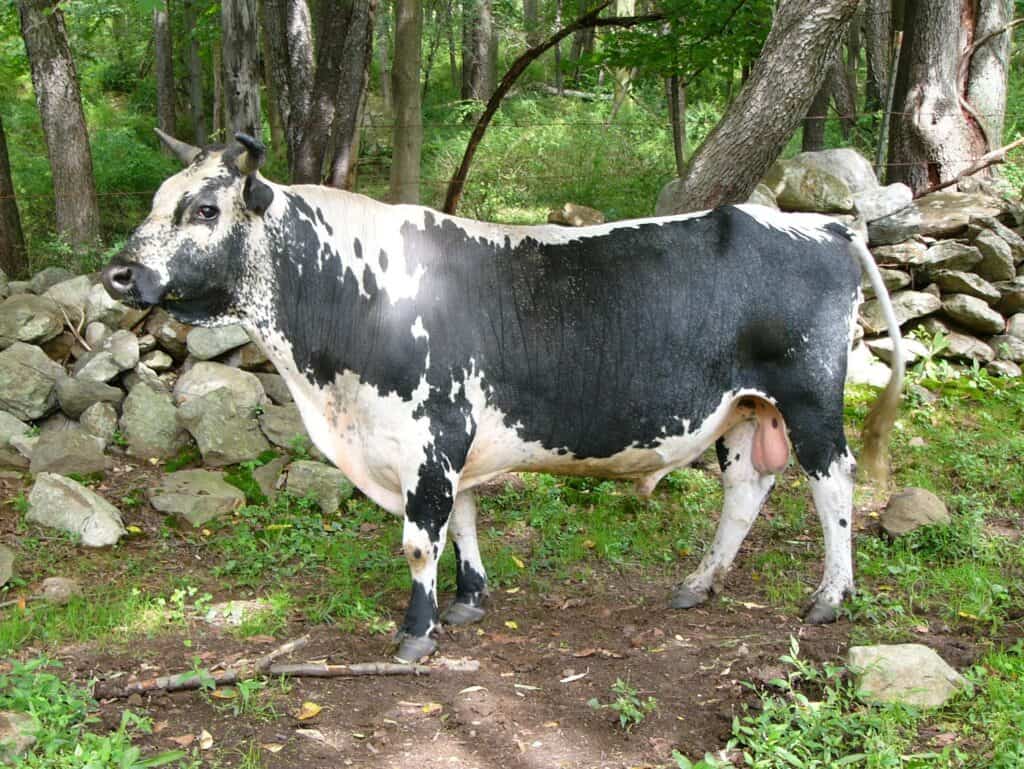
©CTPhil/CCBY1.0 – License
Randal Lineback cattle, or Bos primigenius, was adopted as Vermont’s official state livestock in 2006 under House Bill No. 468, which Governor Jim Douglas approved. This cattle breed is among the last surviving landrace cattle breed.
Randall Lineback is a native of Vermont and has naturally adapted to the environment in the state, unlike other breeds, which are selected and bred to conform to pre-existing conditions. Additionally, it is listed as an endangered species in the United States.
Pending Bill to Name a State Dog
Despite having heated discussions in several instances about naming beagles as the official state dog for Vermont, the bill has not been passed.
The animal rights group against naming beagles as the state animal proposed an all-American mutt as the best animal option for Vermont’s state dog. However, both bills have stalled.
The post Discover the 9 Official State Animals of Vermont appeared first on AZ Animals.
from Animal News, Facts, Rankings, and More! - AZ Animals https://ift.tt/Oq60gk8